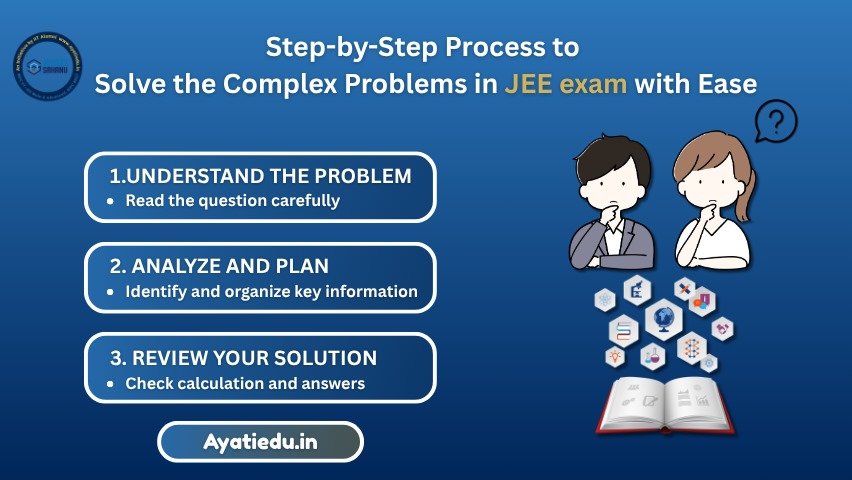Solving complex problems isn’t the most exciting part of JEE preparation for most students. But it’s undoubtedly one of the most important. These high-weightage questions often hold the key to securing better ranks, as they can make a significant difference in your overall score.
The challenge, however, lies in knowing how to approach them. Many students get stuck not because they lack knowledge, but because they don’t follow a systematic method to break down the problem and find the solution efficiently.

If you’ve ever felt overwhelmed by long, multi-step questions or unsure where to begin, you’re not alone. What you need is a simple, structured approach that you can apply to almost any type of complex problem—across Physics, Chemistry, or Mathematics.
In this article, we’ll walk you through a step-by-step process that takes the guesswork out of problem-solving and helps you tackle even the toughest JEE questions with clarity and confidence.
1.Understand the Problem—Don’t Rush to Solve It
The first step towards solving any complex problem is understanding exactly what’s being asked. That means reading the question thoroughly—more than once if needed. Many students make the mistake of skimming through the question and rushing into calculations. Instead, pause and break the question down:
- What is given?
- What is required?
- Are there any hidden or implied conditions?
Once you clearly understand the problem, list out the key findings—every piece of information that will help you reach the final answer. This helps you stay focused on the approach rather than just the solution.
2.Make a Note of the Existing Data
This step might seem obvious, but it’s often underestimated. Write down all the values, knowns, and constants provided in the question. Doing this does two things:
- 1.It helps you visualise what you’re working with.
- 2.It gives you early clues about which concepts or formulas might be applicable.
Progress step-by-step, and make sure each stage leads you closer to the final answer. This methodical approach helps build clarity and confidence.
3.Split the Problem Into Manageable Stages
Trying to solve the entire problem in one go can lead to mistakes or confusion. The key is to divide the question into smaller, logical steps. Start with the part that has the most information or seems the most direct to approach.
- Draw diagrams if needed (especially in Physics).
- Write relevant formulas next to each step.
- Solve for one unknown at a time using available data.
Progress step-by-step, and make sure each stage leads you closer to the final answer. This methodical approach helps build clarity and confidence.
4.Review Each Step Before Moving Ahead
Don’t wait until the end to realise you went wrong somewhere. At the end of each stage, do a quick review:
- Have you applied the right formula?
- Is your concept correct?
- Are your calculations accurate?
Spotting a mistake early can save precious time and prevent bigger confusion later. This habit also trains you to be more precise, ultimately improving your speed and accuracy in the long run.
Final Thought
Solving complex problems in JEE is more about process than pressure. When you approach a problem step-by-step—understand it well, organise your data, solve in stages, and constantly review—you not only increase your chances of getting the right answer but also reduce stress during the exam.













